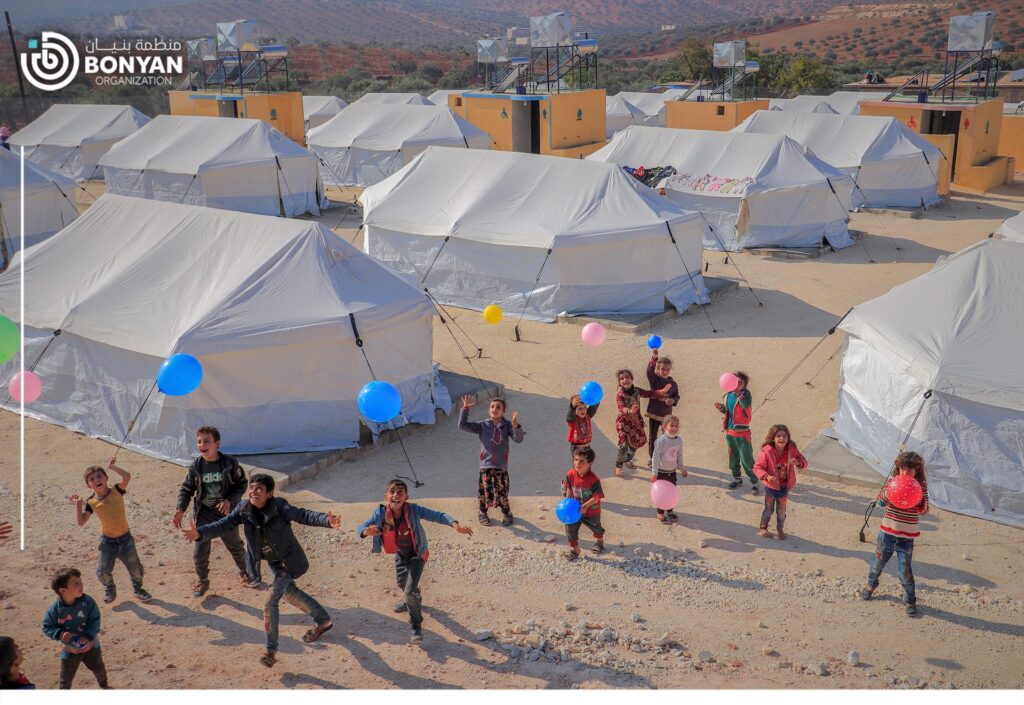The need for shelter is one of the basic human rights for all people.
Nevertheless, millions of venerable refugees are living in dire conditions as they take shelter in poorly installed camps that barely protect them.
Due to such miserable conditions, they run the risk of losing their lives on a daily basis.
This article sheds light on the process of building shelters for refugees and the steps necessary for such a life-changing project.
Assessing The Needs
Nonprofits, charities, and international organizations usually assess the needs of refugees for shelter by conducting the following steps:
- Conducting surveys and qualitative interviews to determine the particular needs of the refugees.
- Gathering information from international organizations that work on the ground with refugees to identify the number of refugees who require shelter and services.
- Utilizing other sources of information, such as media reports and community discussions, to pinpoint the unmet needs of the refugees.
- Establishing partnerships, connections, and collaborations with housing providers to assess the housing needs of the refugee.
- Conducting a comprehensive assessment of the current and future shelter requirements of refugees.
- Utilizing the mapping technology to identify vacant properties, potential sheltering sites, and available lands.

Designing The Shelter
Designing shelters for refugees that accommodate the needs of refugees is a project that needs to be attended to with a lot of diligence.
Therefore, below are some tips that could help with this mission:
- Utilizing sustainable and energy-efficient building materials for designing and constructing housing for refugees.
- Designing comfortable accommodation units that meet the needs of refugees for safety, security, and comfort.
- Incorporating communal areas for activities that promote a sense of community.
- Designating spaces and areas for social facilities, such as educational and health services.
- Establishing fences, lighting, and access control system to ensure safety and security around such accommodations.
- Developing an effective plan for maintenance and repairs.
Sourcing Materials
Sourcing the construction materials needed is a fundamental step in building accommodation options in refugee communities.
Here are some steps that could help in the process of sourcing materials for this project:
- Contacting international aid organizations to inquire about the materials used in building the shelters.
- Reaching out to governmental and non-governmental organizations to inquire about the availability of building materials.
- Raising funds to purchase the materials needed for the project by utilizing crowdfunding platforms.
- Seeking donations from different sources, such as businesses and individuals.
- Seeking the help of local companies and creating partnerships with them that offer building materials, such as wood, plastic, and bamboo.
Constructing The Shelter
Constructing shelters for refugees is a process that involves engaging with the local refugee community to ensure it meets the standards of safety and the accepted cultural norms of the community.
Thus, below are some guidelines that help in that process:
- Providing training and guidance to the community members on construction techniques and safety measures.
- Educating the community by providing workshops and seminars to teach refugees the techniques needed for building shelters.
- Contacting international organizations that could help provide guidance for building refugee shelters.
Providing Essential Services
Providing essential services in and around shelters is a basic right for refugees. Such services include the following:
- Education: This includes access to educational opportunities.
- Health care: This includes providing refugees with healthcare services, such as primary care, preventative health care, and specialty care.
- Employment services: This includes helping refugees find employment and gain skills to become productive and independent.
- Social services: This includes offering assistance with accessing social services, such as cash assistance and public benefits.

Ensuring Safety and Security
Ensuring the safety and security of refugee shelters can be done by applying a set of measures, such as:
- Installing security systems in the shelters, such as CCTV cameras and motion detectors.
- Ensuring all entry points are adequately secured with deadbolts and locks.
- Ensuring that all residents are identified and registered.
- Regularly monitoring the shelters and their surroundings.
- Installing proper lighting in and around the shelters.
- Training staff and volunteers on safety procedures and protocols in refugee shelter settings.
- Establishing an emergency evacuation plan and practicing it regularly.
- Putting in place a secure and dedicated communication system.
- Regularly reviewing and updating safety protocols.
- Installing fire alarms and ensuring all fire safety regulations are implemented.
Monitoring and Evaluation
Monitoring and evaluating refugee shelters are integral to maintaining the effectiveness of such projects. This can be done through the following:
- Conducting surveys of refugees at regular intervals.
- Collecting feedback from staff.
- Monitoring changes in the number of refugees.
- Tracking refugee outcomes.
- Analyzing data.
Sustainable Solutions
Incorporating sustainable solutions in refugee camps are key to reducing the environmental impact and ensuring the long-term viability of the program.
Such solutions include the following:
1. Using renewable energy sources such as solar and wind.
2. Implementing water conservation and harvesting methods to reduce water consumption.
3. Incorporating environmentally friendly building materials into the shelter design, such as recycled materials, natural insulation, and natural ventilation techniques.
4. Establishing sustainable waste management systems to reduce, reuse, and recycle waste.
5. Building shelters with green spaces for recreational activities and socializing.
Nearly 1.7 million Syrian refugees, 80% of which are women and children, are at risk of being demolished at any time by storms or natural disasters.
These camps do not provide those refugees with safety, let alone protect them from cold or hot weather conditions.
Thus, at Bonyan Organization, we are organizing a special campaign to help provide 100 families and widows with safe housing.
Join hands with us and donate to support this noble cause and get the rewards of sadaqah jariyah in this holy month!
So what are you waiting for? Donate today at the link below:
Resources
FAQs
How can we provide shelter to refugees?
We can provide shelter for refugees by establishing long-term shelters with more comprehensive services such as education, job training, and social services.
What kind of shelter do the refugees need?
The kind of shelter that refugees need ranges from basic tents to more secure, permanent structures.
What do refugees need most?
Refugees are mostly in need of:u003cbru003e-Healthu003cbru003e-u003ca href=u0022https://bonyan.ngo/education/school-health-and-nutrition/u0022u003eNutritionu003c/au003eu003cbru003e-WASH services.u003cbru003e-Food. u003cbru003e-Shelter.u003cbru003e-Energy.u003cbru003e-Education.



